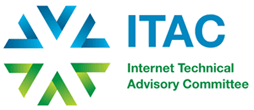By Lyman Chapin, Partner, Interisle Consulting Group
We’ve all used the term “Open Internet” so often, in so many different contexts, that we tend to assume that everyone knows what it means—and that it means the same thing to everyone! But some people think that having an “open Internet” is the same as having “network neutrality,” and others think that an “open Internet” is simply an anarchy in which the rule of law and other norms of human behavior don’t apply. Neither viewpoint captures the essential properties of openness that make the Internet such a uniquely valuable platform for social and economic growth.
As we head towards the 2016 OECD Ministerial, which will focus on the way in which good Internet policy making supports an expanding open Internet economy and stimulates innovation and economic and social growth, it will be useful to find a common understanding of what an open Internet is, and why openness is one of its most important features.
In the Internet, openness is about opportunity, not ideology: it is about the opportunity for students, entrepreneurs, creators, and inventors to explore new ideas and new business models without asking permission from any established gatekeeper. Openness is not about promoting the social or political values of one group over others. It is freedom, not disorder. The open Internet is an environment of social and economic empowerment not because its supporters relentlessly assert that “openness is good,” but because it confers extraordinary tangible benefits:
- As a technical infrastructure of hosts, routers, service providers, protocols, and many other components, the Internet is optimized for interoperability—peer components interact with each other without extensive prior configuration because information is shared openly, and every developer and operator has open access to the externally visible behavior of each element of the Internet system. Any host or network can join the Internet simply by making the necessary physical connections and following the protocol standards.
- As a highly resilient operational infrastructure that relies on the voluntary participation of many different parties to manage its independent parts, the Internet is an open society of individuals and organizations that fulfill their separate local missions by collaborating to make the global Internet work. This feature of openness allows Internet political agreements to accommodate considerable variation in the organization, operation, and autonomy of the infrastructure elements that collectively support “the Internet.” The open Internet represents a political arena in which the spectrum of available choices among collaboration models is not limited to those that require a high degree of uniformity or centralization.
- As an innovation engine that supports the development of new technologies and initiatives, the Internet succeeds because openness—in terms of transparency, access, and participation—brings the best ideas to the table, distributes them widely, and engages everyone in the process of turning them into new services and applications. Innovation in the open Internet arrives by consensus through open collaboration among researchers, manufacturers, service providers, and users. It can enter from any source and propagate in any direction.
However we use the term “open Internet,” we tend to take these benefits for granted, as though they were natural consequences of building a global network. But we enjoy them not just because the Internet is global, but because it is open—and we will continue to enjoy them only if it stays that way.
_____________________
Lyman Chapin has contributed to the development of technologies, standards, and governance structures for the Internet since 1977, and is widely recognized and respected as a leader in the networking industry and the Internet community. His broad experience and deep insight are invaluable to Interisle’s clients, who benefit from his ability to focus both a powerful intellect and the skills of a seasoned diplomat on problems ranging from network architecture and design to organizational dynamics and business strategy.

